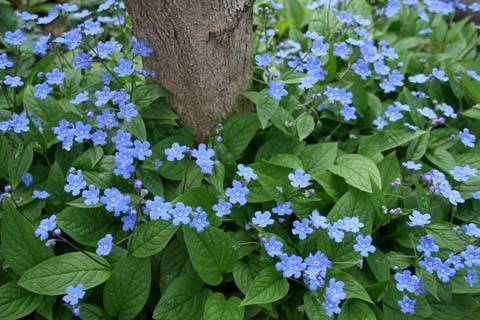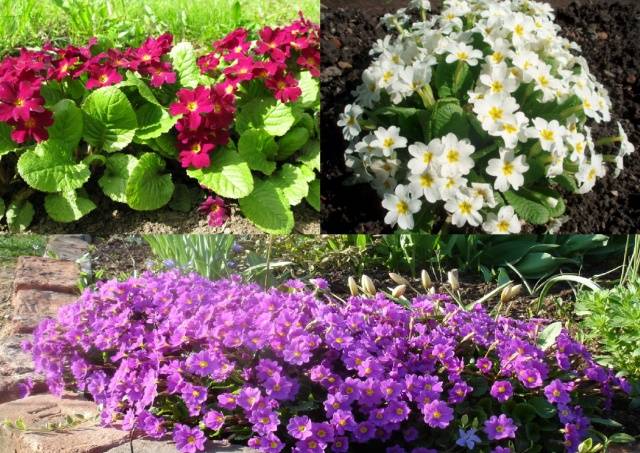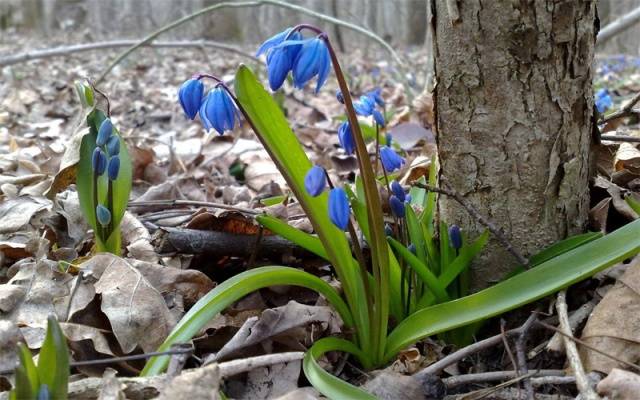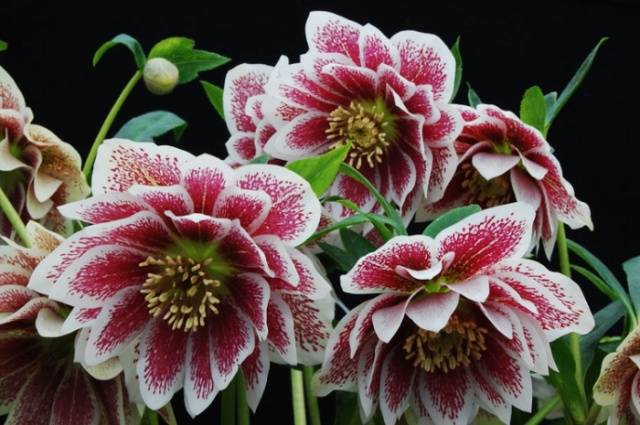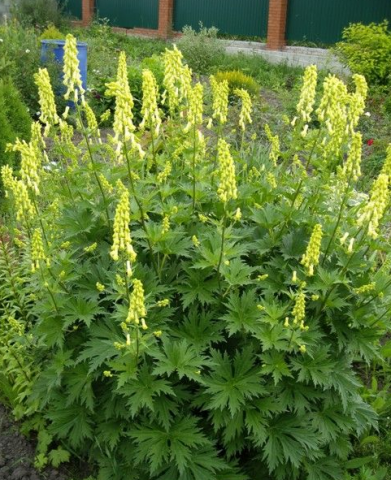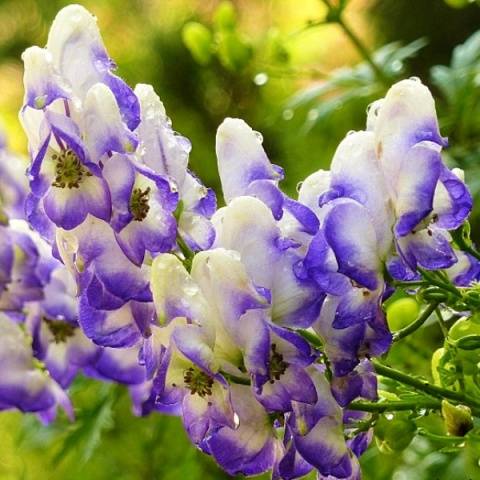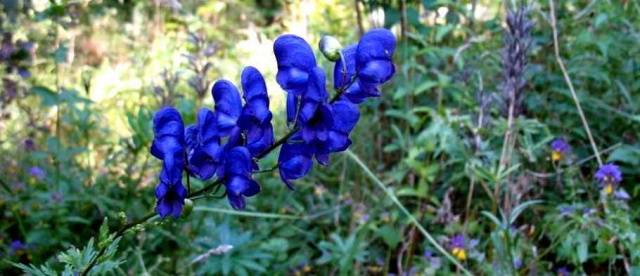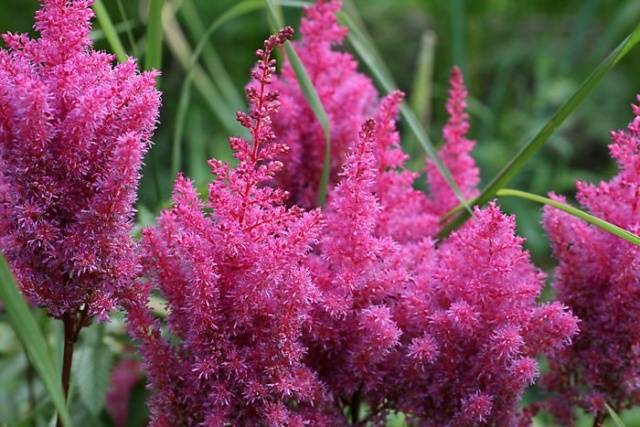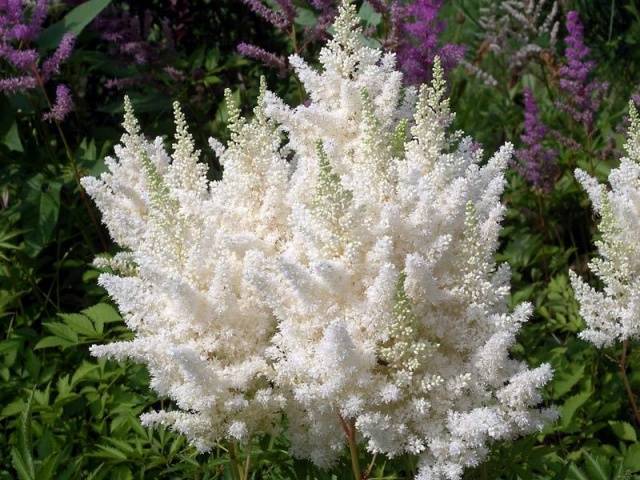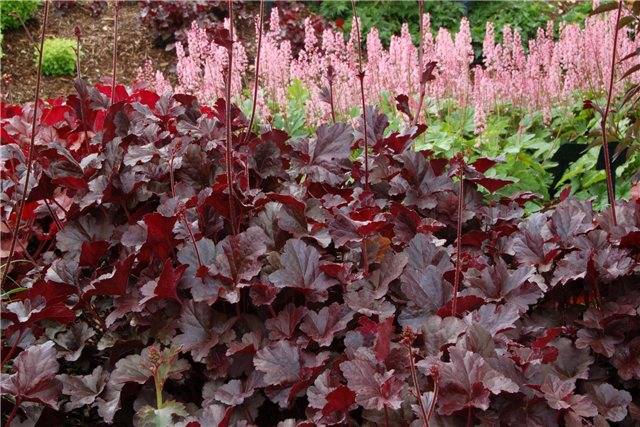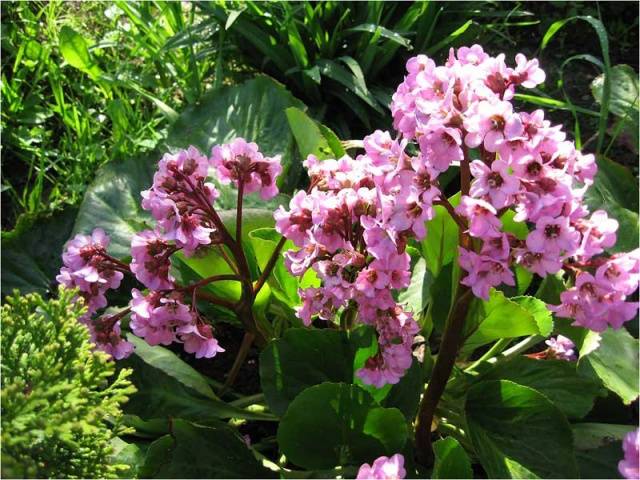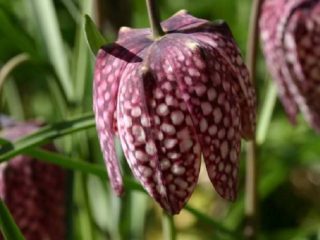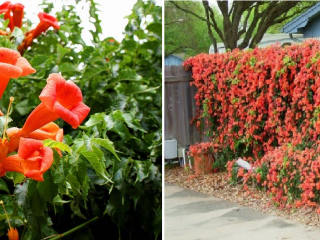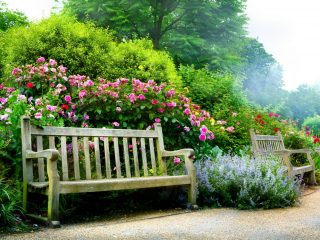Content
A shady garden is not an obstacle to creating lush, beautiful, flowering flower beds, but for this you need to select special, shade-loving perennials that do not require abundant sunlight and do not cause much trouble in care. They do not need to be planted annually and are resistant to diseases and low winter temperatures. Among these flowering perennials there are low-growing and tall plant species. By combining them, you can get a gorgeous flower bed even in the shady part of the garden. Get to know these unpretentious, shade-loving perennials can be lower.
low growing flowers
short, flowering perennials can decorate a flower bed, the banks of a pond, walking paths, the base of tall trees and an ordinary green lawn. Various types of plants with varied flower colors are suitable for shady areas of the garden. So, the following low-growing, shade-loving plants are offered to the gardener to choose from:
Umbilical
Navelwort is a type of perennial plant that includes 16 varieties. All of them are shade-loving, tolerate drought well and are remarkably adapted to growth even in the northern regions of Russia.
The most famous varieties of umbilical cord include “Creeping umbilical cord”, “Blue-eyed Maria”, “Creeping forget-me-not”.The flowers of these plants are really similar to forget-me-nots. Their color varies: from white to azure blue. Plant height is 20-30 cm. The leaves of the navel are squat, oval, with an average diameter of up to 3 cm. The flowers are five-petaled, simple. Their diameter is no more than 1.5 cm. Inflorescences of 3-4 small flowers are formed on each peduncle. The navel blossom blooms from the beginning of May for 30-40 days.
The plant is perennial, frost-resistant, tolerates frosts down to -27.0C. There is no need to prepare the umbilical cord for the winter period. The crop is propagated by sowing seeds, which ripen after flowering.
Primrose (primrose) Julia
Very unpretentious, short the plant prefers shady areas land. Primrose is winter-hardy, very hardy: it tolerates high humidity and drought. Primrose blooms profusely and for a long time, from late April to mid-summer.
Primrose is ground cover plant, which reproduces remarkably well by seeds. Its fleshy leaves are squat and cover the ground with a durable green carpet. The flowers are located on peduncles, 10-15 cm high. The total height of the bushes does not exceed 20 cm. Primrose flowers, depending on the variety, can be painted white, pink, purple, lilac, red. They are simple, five-petaled. Their diameter does not exceed 1.5 cm. Photos of wonderful primroses can be seen below.
Scilla
The Scilla genus includes more than 80 varieties of low-growing, shade-loving garden flowers. In nature, this flower can be found in parks and forests in Europe, South America and Asia.The root system of these shade-loving perennials is bulbous, the leaves are thin, lanceolate, located close to the surface of the earth. The flower stalks of the plant are leafless, low, holding single flowers or lush inflorescences, depending on the specific variety. Various types of scilla can have white, pink, blue or purple flowers. Each flower is like a bell and consists of 6 petals.
It is recommended to grow blueberries in shady areas of the garden. The plants are perennial and highly resistant to freezing. Flowers prefer loose, well-drained, moist soil with a high content of humus. They bloom in early spring. The total height of the scilla is no more than 15 cm. The culture reproduces by bulbs and seeds.
Hellebore
This unique flower has been familiar to people for many centuries. There are legends about him associated with the birth of Jesus. In ancient times, it was believed that hellebore had witchcraft powers and could protect a person from adversity. This plant appeared in flower gardens quite recently, 10-15 years ago.
The plant belongs to the buttercup family. Its second name is helleborus. It is highly resistant to frost and drought. Hellebores should be grown in shady areas of the soil, away from direct sunlight. Helleborus flowering begins in March and continues throughout the spring. The first flowers of this culture make their way through the thickness of the snow and are harbingers of warmth.
Hellebore flowers are large, with a diameter of at least 8 cm. Their shape is similar to a lantern. On each peduncle, 20 cm high, 3 flowers are formed at once. Their color depends on the variety. Thus, the white petals of the “Black Hellebore” variety have a pink border along the contour.“Oriental hellebore” has very beautiful variegated flowers, photos of which can be seen below.
There are also varieties of hellebore, the flowers of which are colored pink, orange-red, dark burgundy, and lilac.
In addition to the above listed species of low-growing perennials, the shade-loving species are the small periwinkle and the familiar lily of the valley. These flowers are shade-loving; in nature they live in forests and parks under the cover of the tree crown. They can also be included in flower bed arrangements.
Tall
Shade-loving, tall perennials can also make wonderful garden decorations. They are preferably placed in the center of a flower bed or at the foot of tall trees. There are many shade-loving tall perennials, the names of which are often unknown to the average person. To familiarize yourself with these, below is a list of beautiful, unpretentious flowers, perfectly adapted to shady conditions.
Aconite
Wolfsbane can be found under many names, such as fighter grass, blue buttercup, or wolfsbane. This perennial, shade-loving plant has high decorative qualities and medicinal properties. In nature, there are more than 300 different species and varieties of aconite, which can be found in the forests of Asia and Europe. In floriculture, the most famous are Wolfsbane, Bearded Wolfsbane, Deceptive Wolfsbane and some others.
Different varieties of aconite differ in the height of the plant and the shape and color of the flowers. Thus, the Wolfsbane variety forms bushes one meter high. Its flowers are collected in inflorescences, which are located on a long peduncle. The color of the flowers is bright yellow.
The variety “Aconite bearded” has flowers similar in color and shape.
Shade-loving garden flowers aconite "Bicolor" is also widely popular because it is very unpretentious. The height of bushes of this variety reaches 1.5 meters. The flowers are painted in two colors at the same time: white and blue.
The variety "Aconite Djungarian" has bright blue flowers, which allows it to truly become the highlight of every garden.
More information about aconite can be found in the video:
Astilbe
A perennial, shade-loving, tall plant that can decorate a garden. Astilbe stems are erect, ranging from 2 to 8 m in height. The leaves of different varieties differ in shape, for example, they can be simple or pinnate, serrated. The color of the leaves is reddish or dark green.
Astilbe flowers are openwork inflorescences of various colors. So, you can find white, red, pink, purple, lilac and other flowers of this culture. Inflorescences, depending on the variety, can have the shape of a pyramid, diamond, or panicle. Without exaggeration, these wonderful plants bloom all summer: from June to August.
The most famous and popular varieties of astilbe include “Gloria”, “Rubin”, “Glut” and others. These varieties from the Aredsa subgroup are distinguished by a particularly long flowering period. You can see a photo of astilbe variety “Ruby” below.
The Weiss Gloria variety also has no less beautiful flowers. These lush, snow-white inflorescences will fit perfectly into the landscape of any design.
Heuchera
This shade-loving perennial is popular with gardeners and landscape designers.It is famous not only for its beautiful flowers, but also for its original, large leaves, the colors of which are very diverse. Heuchera leaves can be brown, purple, gray, red, white, depending on the specific variety. Some species of this plant have amazing foliage that combines several shades at once. Thanks to the unique color of the leaves, the plant is decorative and can decorate gardens from early spring until frost.
Heuchera prefers to grow in shady areas of the ground. The best soil for it is nutritious, well-drained soil. This wonderful plant can be used to decorate the banks of artificial reservoirs and compositions using stone. Heuchera height is 40-50 cm.
During the growing process, the shade-loving perennial does not require special care or care. It is resistant to drought and cold, however, it is recommended to cover the plant with spruce branches in the winter to avoid freezing. Bushes need to be replanted every 5 years. For propagation, you can use heuchera seeds or roots.
There are many different varieties of heuchera, however, the most famous are “Palace Purple”, “Marmalade”, “Regina”. So, the first of the listed varieties has purple leaves, similar in shape to maple leaves. The Palace Purple variety blooms from June to August. The flowers of this heuchera are located on high peduncles, have a brush shape, and are colored pink.
Bergenia thickleaf
This perennial, shade-loving plant can be found in forests and parks. The plant prefers nutritious soils with high humidity. It is recommended to grow them at the foot of tall trees or on the banks of reservoirs.
The leaves of the thick-leaved bergenia are fleshy, large, oval-shaped, and squat. The flowers are collected in inflorescences located on a thick, durable peduncle. The total height of the plant is up to 60 cm.
The flowers of Bergenia thickifolia are like bells and consist of 6 simple petals. Their color is pink. You can see a photo of this wonderful plant below.
Conclusion
In addition to the listed species, tall shade-loving perennials include astrantia, buzulnik, kupena and some other plants.
Surely, on every personal plot there are shady places under the cover of trees, along solid high fences or on the north side of the house. You can beautify these unsightly pieces of land by planting tall perennials. They will not require much attention and care. Every year, with the arrival of spring warmth, they will remind you of themselves and delight you with beautiful lush greenery and wonderful bright flowers. By combining different types of shade-loving flowers, you can create flower beds that will decorate your garden throughout the summer.
